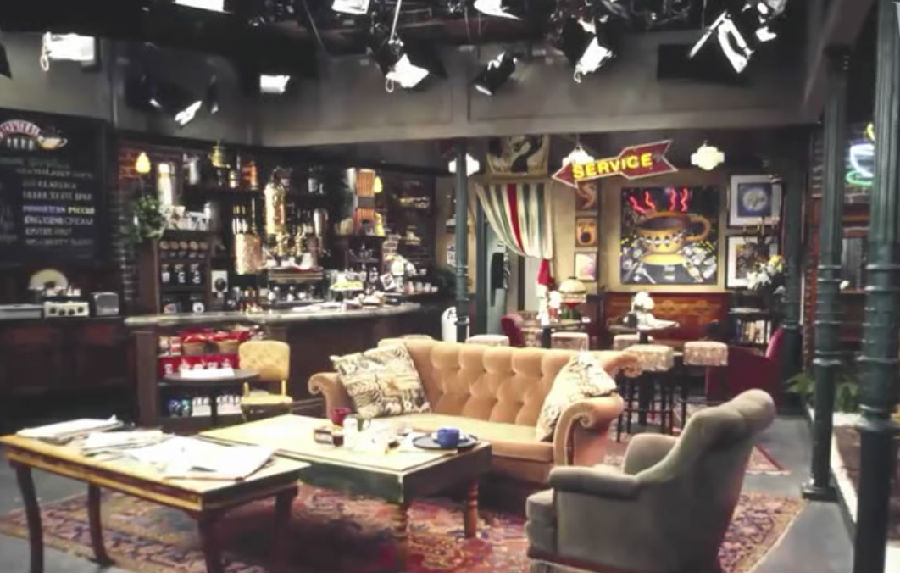(单词翻译:单击)
Frasier and Friends and Caroline in the City and Murphy Brown and I Love Lucy all have one thing in common.
《欢乐一家亲》,《老友记》,《风流卡罗琳》,《墨菲布朗》和《我爱露西》这六部美剧有一个共同点。
No, it’s not all the audience laughter.
不,我说的不是观众的笑声。
They all kind of look…the same.
而是他们看起来......都一样。
And the shots and lighting all are kinda the same.
镜头的角度和灯光的打法都是一样的。
These are three camera sitcoms, with very familiar camera angles and lighting.
这些都是三位摄像机系统情景喜剧,它们的拍摄角度和打灯的方式我们都已经非常熟悉了。
And the guy who perfected the style of light that would one day shine upon Urkel’s face? “Did I do that?”
将这种后来也出现在了《凡人琐事》里的打灯的方式发挥到极致的人是谁呢? “是我吗?”
It’s Karl Freund.
是卡尔·弗罗伊德。
The same guy who made...this.
他的作品还包括......这一部。
He was the German cinematographer behind the look of “Metropolis,” the 1927 classic.
他是1927年的经典电影《大都会》背后的德国电影摄影师。
And there was actually a good reason that a genius decided that going from this to this was a challenge worth betting his career on.
一位天才摄影师其实是有充分的理由认为,从这种拍摄转换成这种拍摄这一挑战是值得他用自己的职业生涯来做赌注的。
This right here is cinematic history.
我背后播放的是电影历史。
It’s from 1924’s “The Last Laugh.”
现在播放的是1924年《最后的笑》里的片段。
For this movie, Karl Freund invented what was probably the first dolly shot in history -
就是在这部电影的拍摄中,卡尔·弗罗伊德发明了可以说是有史以来的第一个推拉镜头。
that’s when a camera moves on a cart or a track.
就是摄影机一边在车上或轨道上移动一边拍摄的手法。
When Freund moved from Germany to Hollywood,
从德国搬到好莱坞时,
he continued to make visual masterpieces from directing the original “The Mummy,” to being the cinematographer on “Dracula.”
无论是指导第一部《木乃伊》还是担任《吸血鬼》电影摄影师,卡尔·弗罗伊德都继续推出了一些视觉大作。
This scene from Dracula is emblematic of his work, with shadows and light serving as powerful tools in the scene.
这个来自《吸血鬼》的场景可以说是他作品的代表,阴影和光线是整个场景中强有力的工具。
With 1937’s “The Good Earth,” he won an Academy Award for Cinematography.
凭借1937年的《大地》,他赢得了斯卡最佳摄影奖。
Freund’s art came from powerful imagery and stark contrasts, like in this scene from Metropolis.
弗洛伊德的艺术来自强有力的意象和鲜明的对比,比如《大都会》里的这个场景。
I Love Lucy looked good - but pretty flat.
《我爱露西》看起来还不错 - 但情节起伏比较小。
That’s why it’s so surprising that he thought it could be a breakthrough.
这就是为什么他觉得这部剧可能是一个突破这一看法如此令人惊讶的原因。
We know Freund was nervous about making a transition from movies like this to television filmed in front of a live audience.
我们知道,从拍摄这样的电影过渡到在现场观众面前拍摄电视,弗洛伊德对此感到很紧张。
Traditional movie lighting wouldn't work in that environment and on a tight TV schedule.
因为传统的电影打灯的方式不适用于电视那种环境,以及拍电视那样紧张的行程。
Here's why.
为什么这么说呢?
Dramatic lighting is cool.
戏剧性的灯光效果虽然很酷。
But if I move, the way people move in sitcoms, I lose the light and the shot.
但是如果我像情景喜剧中的人物那样移动,灯光就会照不到我身上,这一幕的拍摄也会变得失败。
You also can't reset and move that light in front of a live audience.
而且,您也无法在现场观众面前重置并移动灯光。
The shot also has to be lit so that it can be shown by three different cameras at the same time.
现场打灯的方式还要确保三台摄像机能够同时捕捉到。
That challenge appealed to Freund,
弗洛因德对这一挑战产生了浓厚的兴趣,
and, laugh track jokes aside, he wrote that a live studio audience had “an astonishing effect in stimulating performers.”
而且,先不说情景喜剧里的笑声录音,他写道,现场演播厅的观众“在激发演员的表演上有着惊人的效果。”
There were earlier experiments with live taping, but Freund perfected it.
尽管此前也有过现场录音,但弗氏将这一手法发挥到了极致。
You can see how he did it in I Love Lucy’s very first episodes and in this on set picture.
从《我爱露西》的前两集还有这张照片上,我们都能看出来他的这一成就。
First, he put three cameras on his trademark dollies - which is why these are called three camera sitcoms.
首先,他将三个摄像头放在他贴有商标的摄像车上 - 这也是这些情景喜剧被称为三位摄像机系统情景喜剧的原因。
Usually it has one camera in the middle, for wide shots, and two on the sides for closeups.
通常,有一个相机位于镜头中央负责拍摄广角镜头,两侧的镜头负责特写。
You can see it here, as well as in the tape he used to mark the cameras’ positions.
在这个镜头中就能看出来,从他用来标记摄像机位置的胶带的位置也能看出来。


